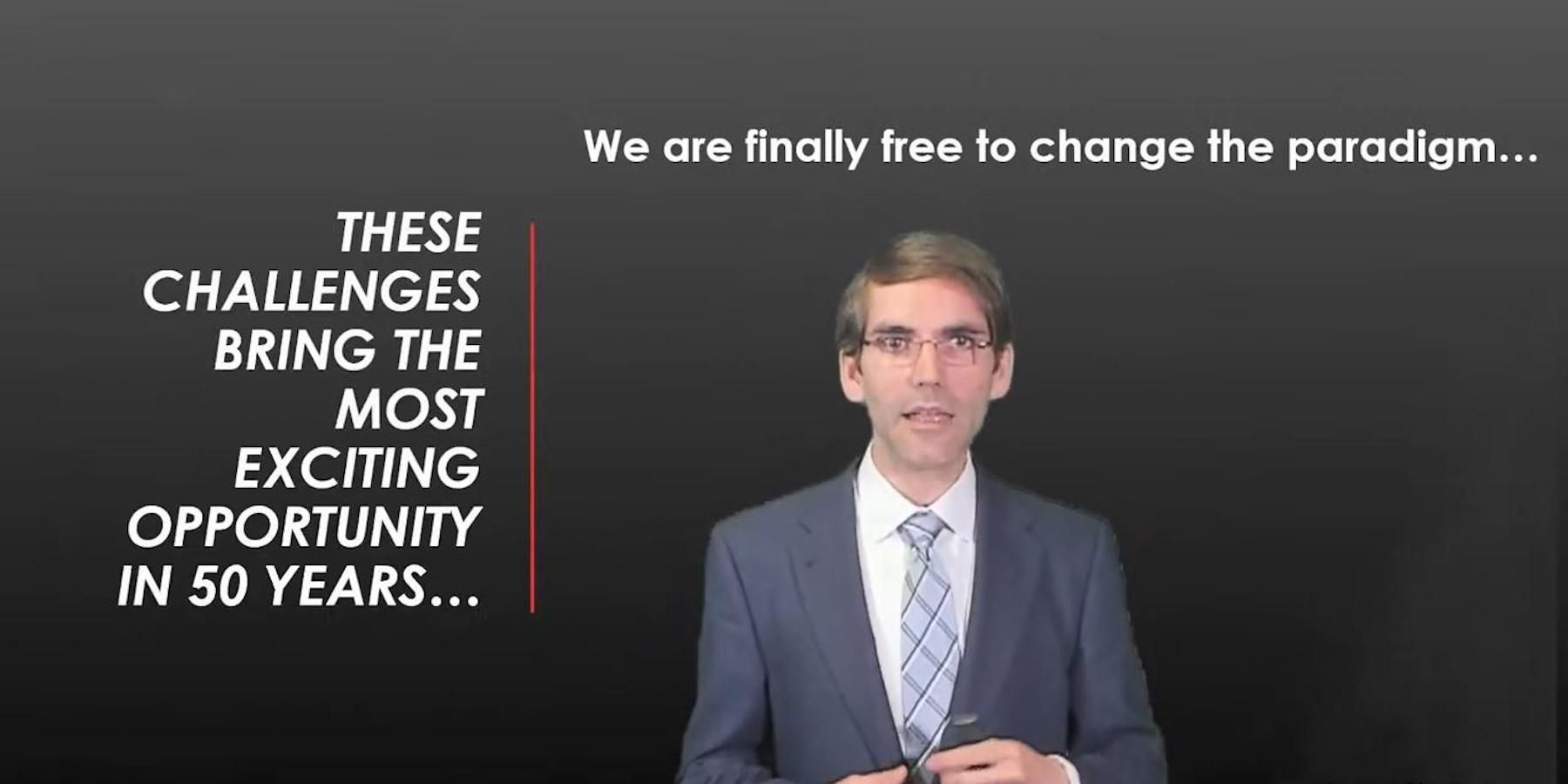Electronics faces major barriers to further evolution in the way it has evolved up until now
Research and development in the field of micro- and nanoelectronics are looking for new ways to manufacture and develop systems to ensure their sustainability in the coming decades. Researcher Tomás Palacios has listed the main challenges of these disciplines in an online conference organized by the IMB-CNM of CSIC.

Electronics faces great challenges to continue evolving exponentially, as it has done over the last 75 years, and to remain the main driving technology of our society: the consumption of energy and necessary resources, the efficiency of devices, the sustainability of production processes, the ability to provide viable solutions in quantum computing or the development of Artificial Intelligence (AI). This was explained by Tomás Palacios, Spanish professor at the Massachusetts Institute of Technology in the United States (MIT), at a conference organized by the Institute of Microelectronics of Barcelona of the CSIC (IMB-CNM, CSIC) on June 1st.
The talk Presente y futuro de la Micro y Nanoelectrónica (Present and Future of Micro and Nanoelectronics) was held online and moderated by IMB-CNM vice-director and researcher Xavier Jordà. "It is framed within the celebrations of the 75th anniversary of the transistor and we want to convey that it is a key fact to understand today's society, since electronics and microelectronics are present in everything around us," Jordà said about the event.
At the beginning of the conference, Palacios indicated that, at the current rate of data generation and storage, "by the year 2040 we will be using 100% of the necessary resources and energy produced for microelectronics and artificial intelligence". The data indicates that, in the next 15 to 17 years, new ways will have to be found for the manufacture and use of electronic systems.
Apart from the energy and resource consumption associated with the production and use of electronics, another major obstacle, he explained, is data transmission. "The amount of information we generate is growing faster than our ability to transmit it. In the coming years, there will be three times more information than we can store and transmit," added the Spanish researcher, which leads us to think about a new treatment of information, since "we are constantly transmitting information."
For all these reasons, Palacios argues that "we are facing the most exciting challenges of the last 50 years, and this provides a tremendous opportunity to change the paradigm of how we manufacture and use electronics".
Although it is difficult and risky to make predictions about where the most significant technological advances will occur, the renowned MIT professor ventured to place them in what he calls "Microsystems at the Edge", i.e., the development of systems connected around "the cloud", more autonomous to obtain energy, sense and process information. These systems will be capable of significantly transforming our daily lives and will be largely based on new materials.
"We are facing the most exciting challenges of the last 50 years, and this provides a tremendous opportunity to change the paradigm of how we manufacture and use electronics".
Hardware "accelerators" for the development of new applications
The great development of AI in the last decade came about thanks to the development of specific chips and hardware that integrated graphics processing units (GPUs) instead of central processing units (CPUs). "Microelectronic technologies enabled the exponential growth of AI," Palacios explained. Similarly, the development of new "accelerator" hardware technologies, such as analog neural networks, should enable a new qualitative leap in AI by significantly improving the performance of conventional electronics.
The same is true of quantum computing, which needs both conventional computing to continue to evolve and "accelerators" based on new technological solutions such as superconducting materials, diamond or silicon quantum dots.
Hardware accelerators will not only help to improve data processing, but also to achieve the complexity of nature in new electronic devices. For example, the human being has 50 million sensors for smell and a dog has more than 200 million, so one of the challenges that the scientific community has been facing for years is to approach this complexity of nature in electronic systems thanks to the incorporation of new materials such as graphene or molybdenum disulfide.
"There are already cameras better than our eyesight or sound systems better than our ears," Palacios illustrated. Palacios' research group at MIT is investigating the development of electronic noses, which would be applied in early diagnosis in medicine, for the detection of pathologies such as Parkinson's disease or diabetes.
Beyond improving the performance of electronic systems by enabling new applications, Palacios also pointed to the potential of ubiquitous electronics thanks to new manufacturing technologies that allow the integration of electronic systems in everyday objects, or the maximum scaling to achieve increasingly miniaturized microsystems, close to cell dimensions.
Palacios, who heads MIT's Microtechnology Systems Laboratory, stressed that the training of new professionals also involves creating specialties that combine knowledge of software and hardware, since the development of tools such as AI requires adapted integrated circuits (or chips).
In any case, Palacios insists that an ethical approach to all these new tools is necessary and gives Chat GPT as an example.





